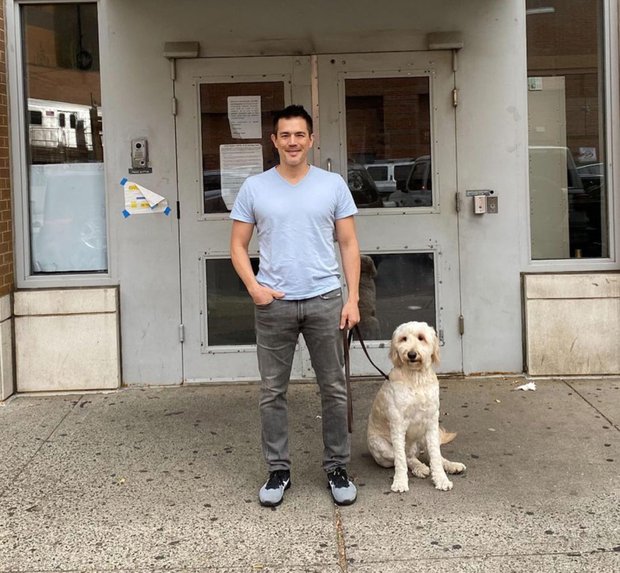Ryan Stewart (New York, USA) started “Ryan for Dogs” – a dog walking service in 2002 to earn extra income. Currently, this is a full-time job that brings him $120,000 a year.
Specifically, he earns about $60 for each hour walking 3 to 5 dogs at once. The reputation of “Ryan for Dogs” has been built over the past 20 years, allowing him to gain the trust of many customers who sign up for long-term services.
“I’ve always loved dogs, so this job is easier for me. The best part is that I don’t need a college degree to earn a six-figure income every year. At the same time, I get to do what I love,” Ryan shared with CNBC.

Ryan works 6 days a week, about 6 hours a day. He says that dogs require constant attention, so his work can be quite demanding. However, Ryan states that for him, the advantages of this job far outweigh the disadvantages. Thanks to his love for dogs, he has overcome challenges and maintained the service for the past 20 years.
“A good dog walker is someone who is highly focused and keeps an eye on the ‘pack’. You have to watch traffic and ensure they don’t get into fights, which could lead to injuries. It may seem like an easy job, but in reality, it’s not something you can do while wearing headphones and listening to music leisurely,” Ryan added.
According to him, even small mistakes or distractions can cost a dog walker dearly. For example, just one dog getting a minor injury can result in veterinary bills amounting to thousands of dollars.
Here’s how he turned his love for dogs into a profitable full-time job:

As a child, while his siblings did house chores like mowing the lawn and setting the table, Ryan was tasked with walking the family dog. Therefore, when he began pursuing professional dancing in New York in his 20s, he thought dog walking could be a way to earn extra income.
“I used to hand out business cards advertising ‘Ryan for Dogs’ on the streets. In the first six months, I only had 2 clients. After that, the number gradually increased,” Ryan recalled.

A few years later, Ryan realized that this could be more profitable if he turned it into a full-time job. However, even though the demand for dog walking services in a big city like New York is relatively high, those in this profession only earn an average of about $36,000 a year.
Ryan has gone through a long journey before achieving his current income level. Currently, he charges about $20 to $25 for each dog walked in a group. About half of his clients come from referrals, while the other half come from the website he created.
Ryan says he often cannot handle all the service requests due to the high volume. After receiving them, he selectively screens the owners and their dog breeds. He only fulfills 10% of the requests received through the website.

Ryan’s schedule during the week includes 2 to 3 hours of walking in the morning, resting for meals and a nap. The next work shift lasts a similar amount of time and occurs in the evening. On Saturdays, he works for 1 to 2 hours. Sundays are Ryan’s complete days off.
Stewart has strict regulations at work. He always uses his own equipment, including leashes and collars. Regarding group dog walking, Ryan says he does this because he feels they interact better with each other. Some clients do not like this due to concerns about potential incidents, but Ryan states that with 20 years of experience, he knows how to control the pack and has never let any member get into an accident.

Some of Ryan’s methods may confuse clients, but he asserts that he has accumulated a lot of useful experience for the job through trial and error. To reassure them, he explains to each person that his methods ultimately aim to ensure the safety of the dogs. This is also part of what has contributed to his reputation.

Ryan states that the downside of this job is that he has to pay for his own insurance, has no paid days off, and must frequently clean up after the dogs.
However, the most challenging aspect of his job relates to their owners. “Since the Covid-19 pandemic broke out, many clients have started texting me to check in while walking. This distracts me when the most important thing I need to focus on is the dogs. Clients tend to become increasingly demanding. Their increased control makes me feel stressed as it creates a sense of being monitored,” Ryan shared.
Nevertheless, he believes that the pandemic has created a significant boost for the pet industry. For example, during the work-from-home period, many clients still wanted to send their dogs for walks so they could focus more on their work.
According to the American Pet Products Association, in 2019, the pet industry was worth $97.1 billion. Last year, this number surged to $123.6 billion.
Source: CNBC, BI